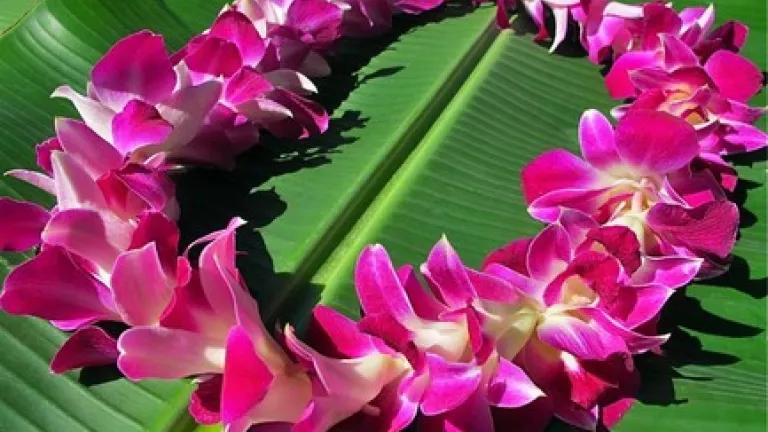
In many island cultures, a flower lei is presented to a person upon arrival or leaving an event as a sign of affection. Participants at the UN Small Island Developing States (SIDS) Conference in Samoa received leis, locally known as ula, upon their arrival to the international meeting this week as a show of warmth from the host country.
But for many at the conference, the lei is becoming a symbol of action as well as hospitality. Speaking at a high-level conference event, Leaders Inspiring Action, the Chair of Hawai’i’s Department of Land and Natural Resources, William Aila, called for leaders at all levels to “string a lei of action around the world.” Organised by the Global Island Partnership (GLISPA), the event brought island leaders together to celebrate and pledge concrete commitments to action that build sustainable island communities.
The clarion call by Mr. Aila recognises that small island countries and regions, despite their size and remoteness, are leaders in taking bold actions on climate change and the other great challenges of our day. It also acknowledges that island leadership can inspire other leaders around the globe to undertake similarly significant actions in their own jurisdictions and organisations. In his speech to the conference assembly, the President of the Republic of Marshall Islands emphasised, “nothing is more powerful than leading by example.”
And that is precisely what island leaders are doing. Knowing full well that the future of their people is at stake, genuine leaders are acting decisively now. At the GLISPA event, Mr. Aila sewed another flower into the growing lei of action around the globe. He pledged Hawai’i to meet six ambitious and measurable sustainability commitments by 2030, known as the Aloha+ Challenge. The targets include doubling local food production, expanding sustainable energy to 70%, and creating green jobs. The commitment has been signed by the Governor of Hawai’i as well as four mayors, and seeks to forge partnerships across sectors, including the business community.
A number of “multi-stakeholder partnership dialogues” were also held at the conference to launch and scale-up concrete actions for small island sustainability. Upwards of 300 partnerships have been pledged through the dialogues across six thematic areas. For example, the International Renewable Energy Agency (IRENA), in partnership with the Marshall Islands, committed to help all small island countries develop renewable energy road maps and mobilise half a billion dollars to transition away from expensive fossil fuels by 2019.
However, even the most genuine partnerships and commitments run the risk of eroding if they are not structured to last. Partnerships can take a number of steps to ensure their durability, including: involving civil society groups in partnership governance, providing regular public updates on commitment progress, and establishing SMART (specific, measurable, action-oriented, resource-based, and time-bound) criteria for deliverables from the start. For example, Hawai’i is developing an internet dashboard that will provide indicators of how well they are meeting their commitments and allow citizens to hold leaders accountable for action.
The UN and other platforms can also nurture partnerships’ longevity by devoting resources and people to support the realisation of commitments. Fortunately, the outcome from the SIDS Conference includes reference to developing a “partnerships framework” that can “monitor and ensure the full implementation of pledges and commitments through partnerships,” but this will require meaningful investment.
The Samoa SIDS Conference is the UN’s attempt to do things innovatively and differently through partnerships. But without implementation and accountability, the promise of the conference legacy will not be kept.
Small islands are microcosms of the world’s sustainability challenges. As the world seeks to develop a post-2015 development agenda and new sustainable development goals, the international community would do well to heed island leadership and ensure accountable commitments to action from all partners are at the centre of implementing the new agenda. To be sure, small island leaders are providing the moral compass to more ably navigate the world to action.
When island leaders gather together ten years from now and participants once again receive their leis, we must ensure the lei of action around the world is flourishing – both in the islands and throughout our shared global island.

